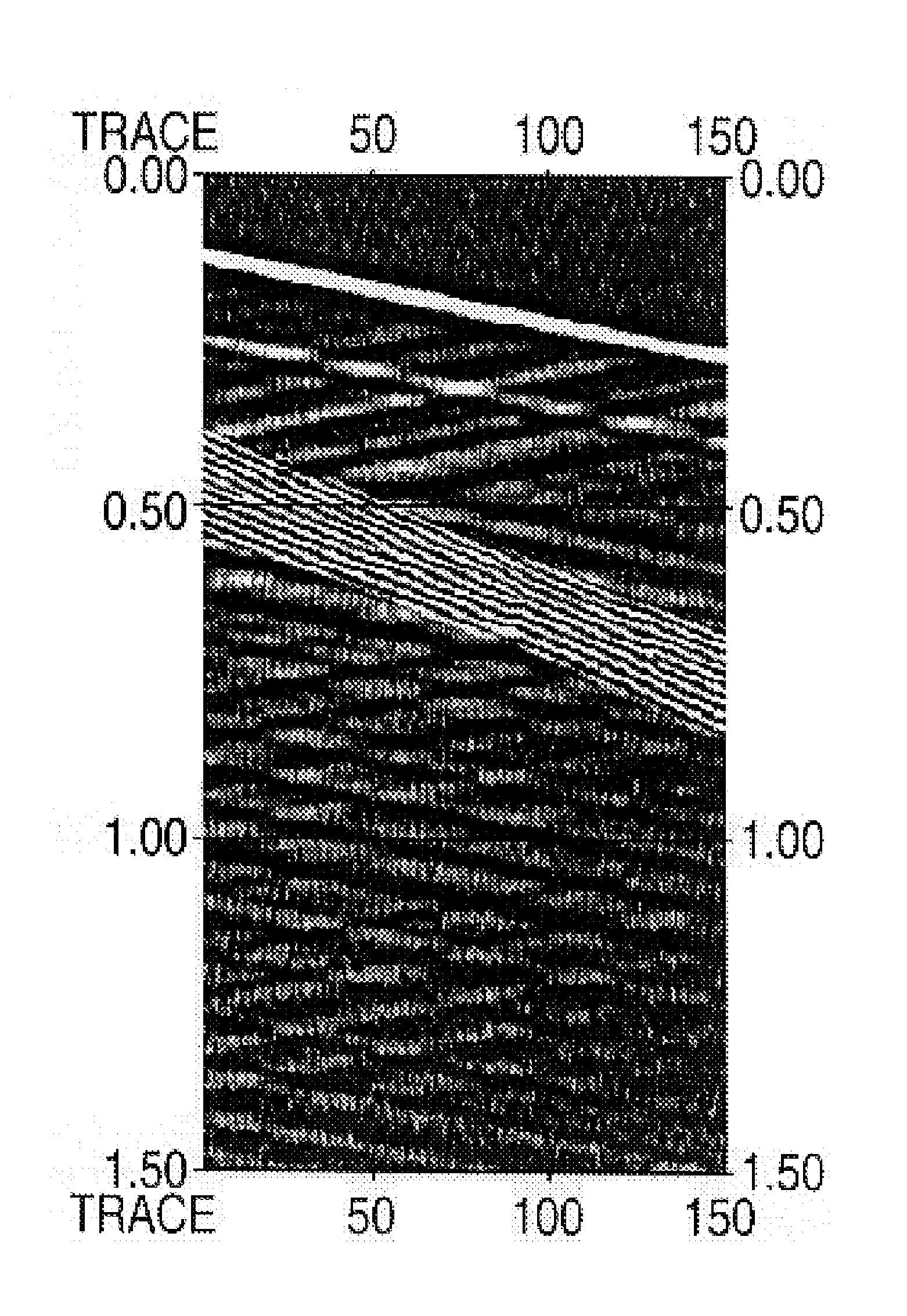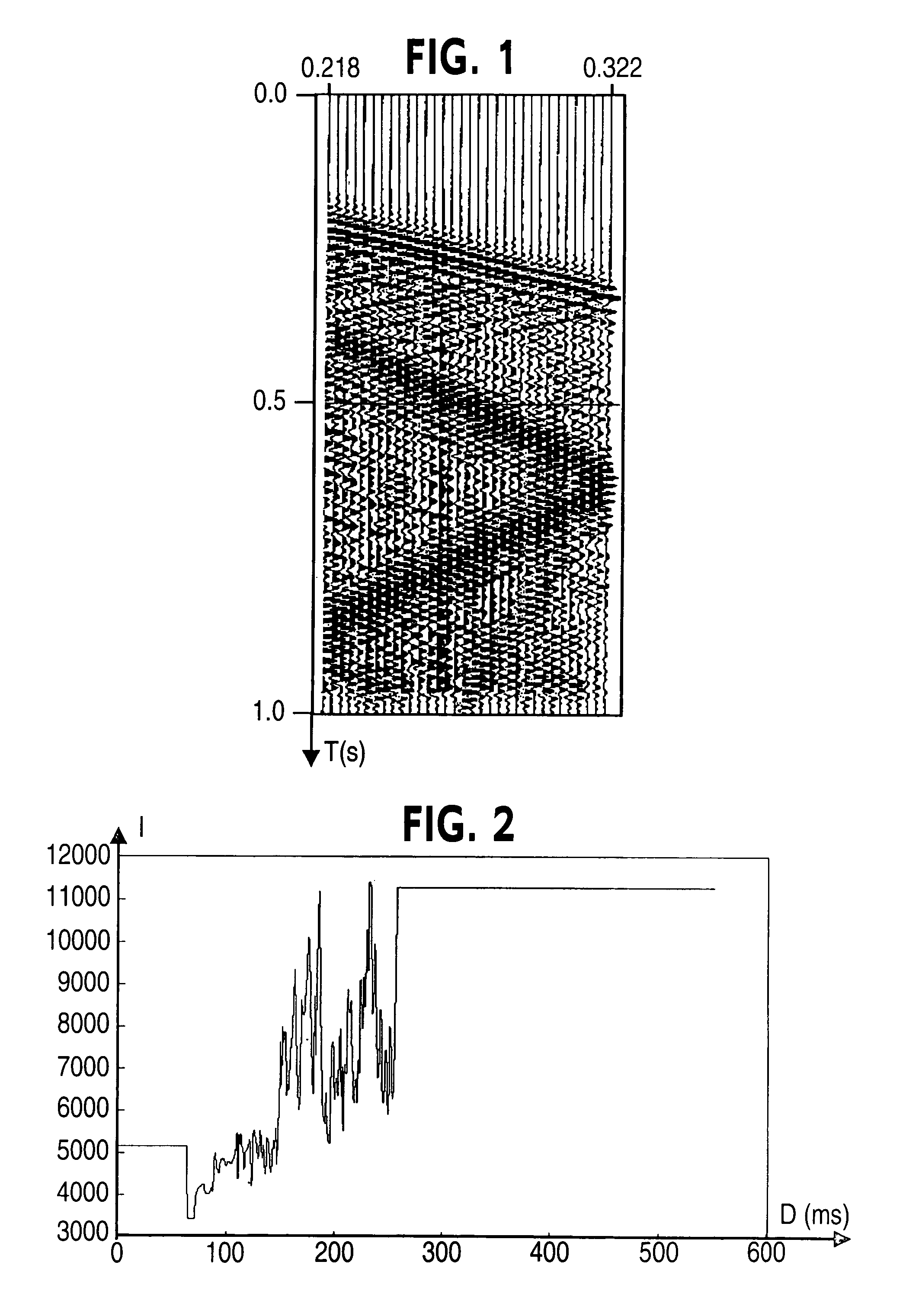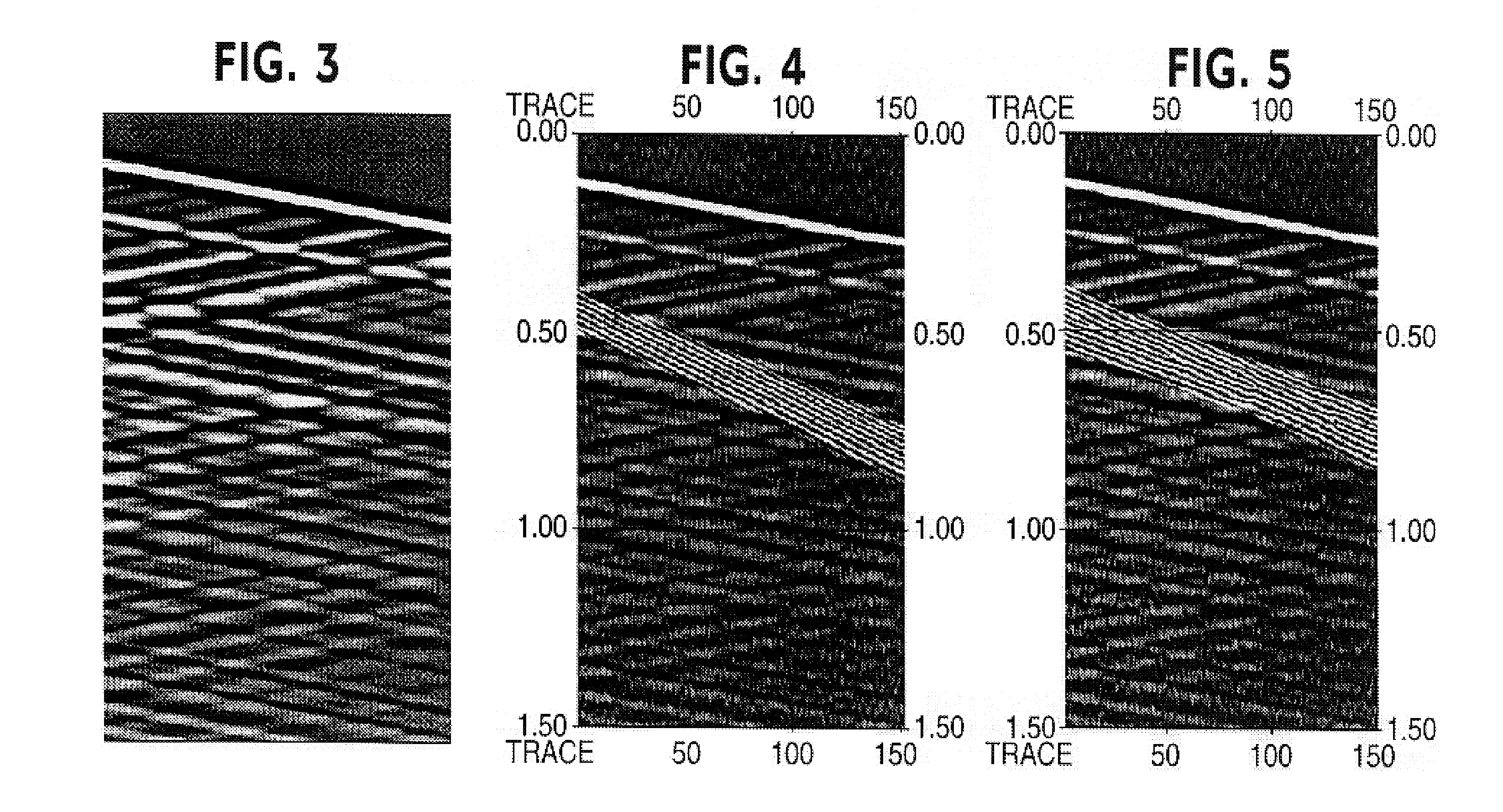Method of forming a model representative of the distribution of a physical quantity in an underground zone, free of the effect of correlated noises contained in exploration data
a technology a model is applied in the field of forming a model representative of the distribution of a physical quantity in an underground zone, free of the effect of correlated noises contained in exploration data, which can solve the problems of affecting the quality of the model estimated by solving the inverse problem, affecting the accuracy of the model, and no modelling operator is perfect, so as to achieve the effect of minimizing the cost function
- Summary
- Abstract
- Description
- Claims
- Application Information
AI Technical Summary
Benefits of technology
Problems solved by technology
Method used
Image
Examples
Embodiment Construction
[0050]Formulation of the Problem
[0051]Data is available resulting from a sampled measurement of a function. This function depends on several variables (space or space-time variables for example).
[0052]These data, called d, correspond to measurements carried out to obtain information about a model m. They contain various noises:
[0053]correlated noises (or a superposition of correlated noises),
[0054]non correlated noises.
[0055]The problem is to determine quantitatively model m (or functions of this model) from data d.
[0056]A modelling operator F is selected (linear or not) which associates with model m the response of the model. This operator actually models the real physical phenomenon only imperfectly. This is essentially (but not exclusively) the reason why correlated noises appear in the data: these noises correspond to a signal related to the model but the relation between them appears to be too complex to be included in modelling operator F, which should keep relatively simple f...
PUM
 Login to View More
Login to View More Abstract
Description
Claims
Application Information
 Login to View More
Login to View More - R&D
- Intellectual Property
- Life Sciences
- Materials
- Tech Scout
- Unparalleled Data Quality
- Higher Quality Content
- 60% Fewer Hallucinations
Browse by: Latest US Patents, China's latest patents, Technical Efficacy Thesaurus, Application Domain, Technology Topic, Popular Technical Reports.
© 2025 PatSnap. All rights reserved.Legal|Privacy policy|Modern Slavery Act Transparency Statement|Sitemap|About US| Contact US: help@patsnap.com



